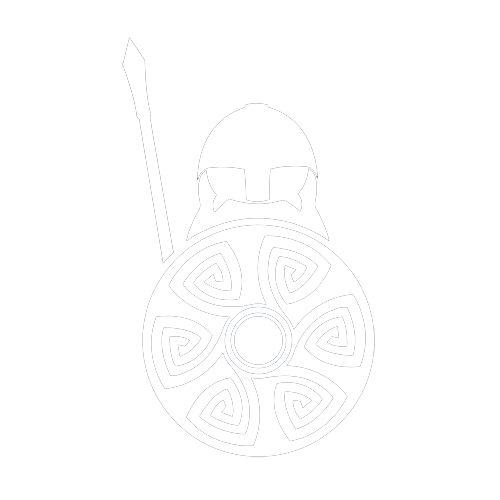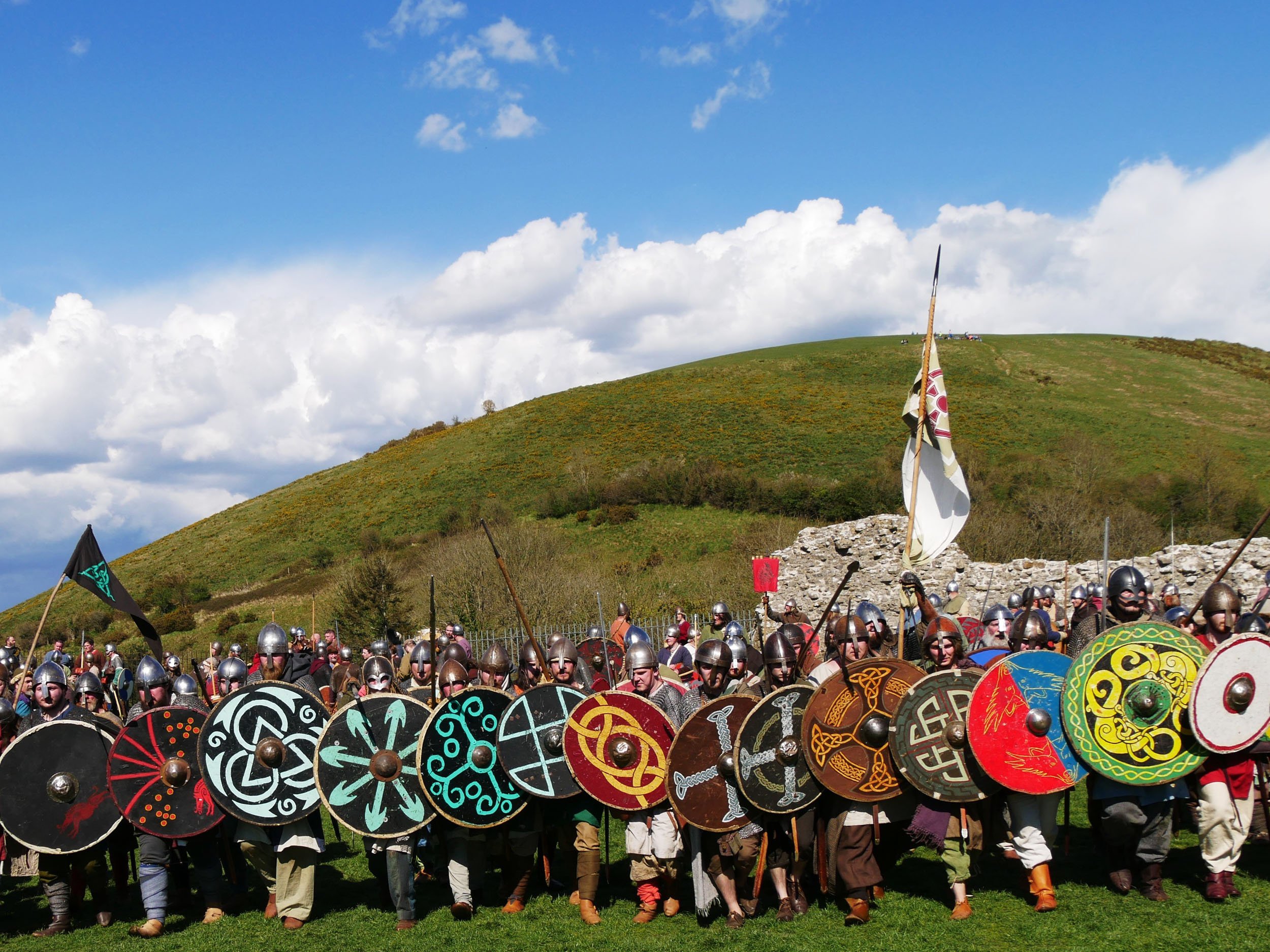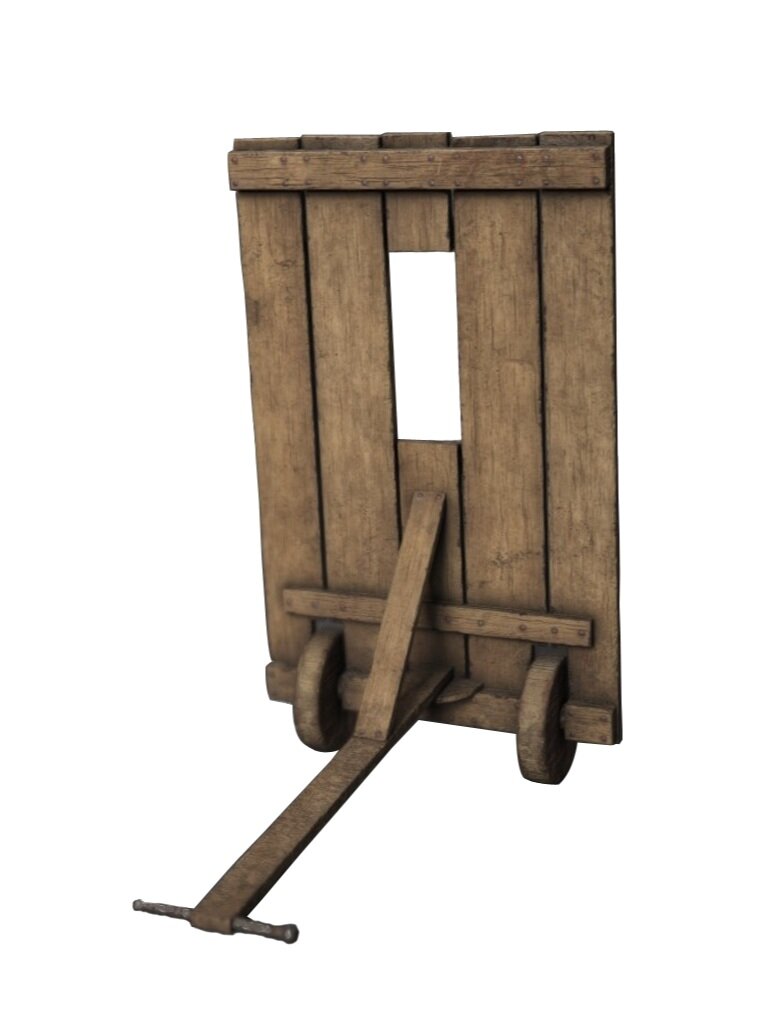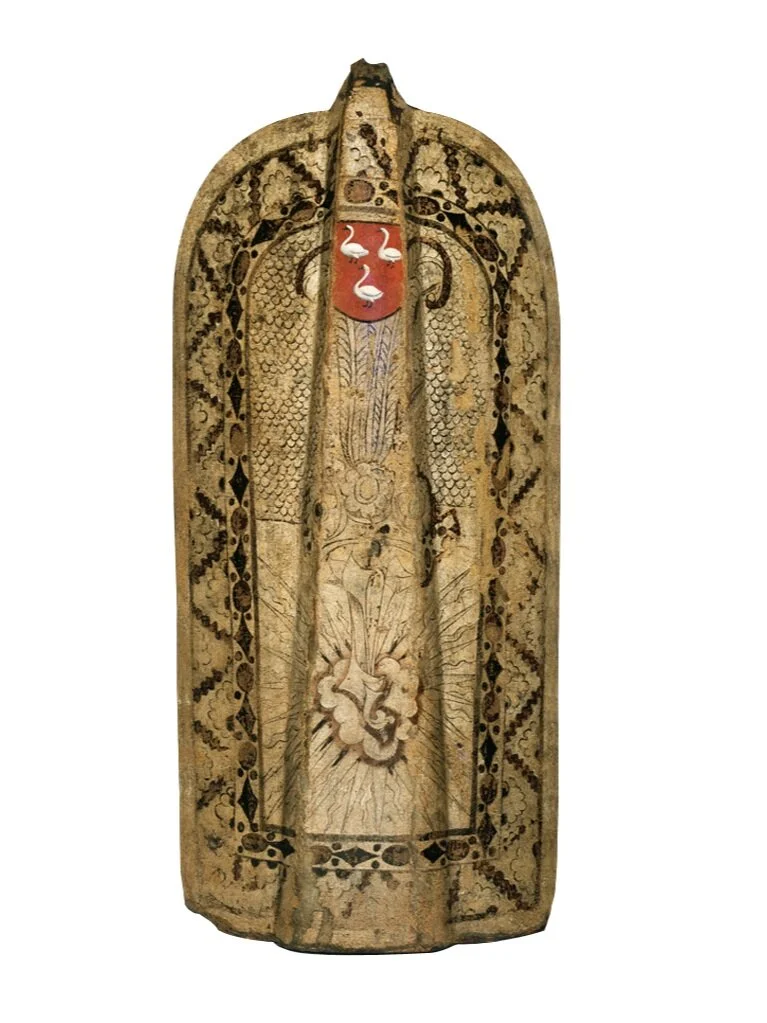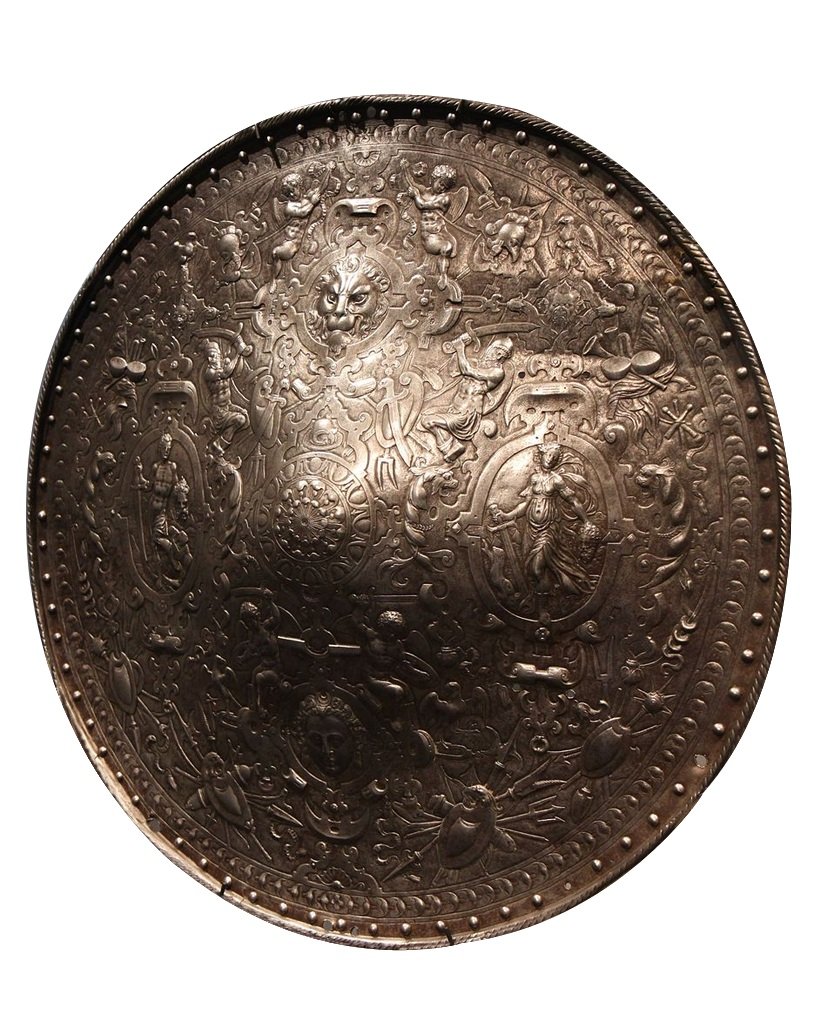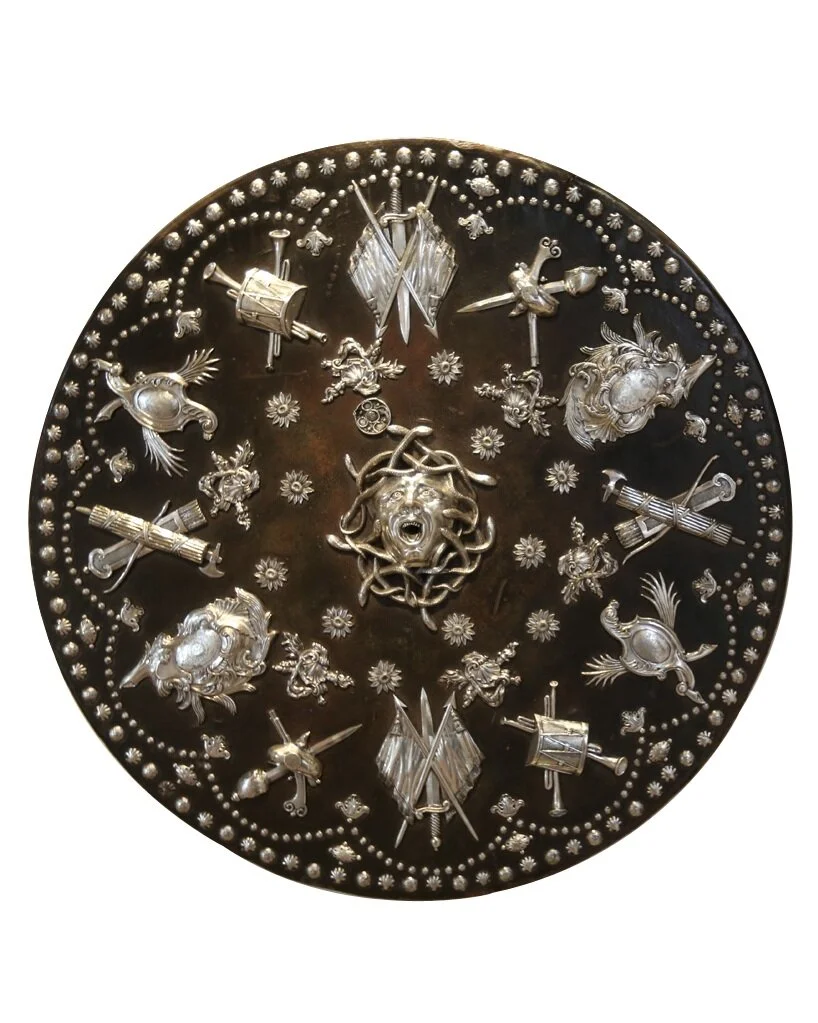Medieval Shields
Medieval Shields were essential for the protection of soldiers during medieval warfare. They came in all sorts of shapes and sizes, tailored to their specific use on the battlefield. They provided not only protection, but also a medium to display their heraldry and colours, to rally troops and to stoke fear (and heavy blunt blows) into their enemies.
However, Medieval shields also play a huge part far away from the war-torn fields. Kings, barons and nobles alike would lavish the walls, fireplaces and halls of their great castles with heraldric shields. Displaying their coat of arms in a militarian way for all to see, showing off their titles, rank, and family history. Many such halls still exist today, dotted with ancient heraldric Medieval shields, allowing the practice of heraldry to continue 900 years on.
Medieval Shields - Designs and Types
The Bouche Shield
The Bouche shield is a shield that is to be used with a lance, normally while jousting. There is a ridge in the middle of the shield which deflects weapons away. The Boucher shield also has a groove on the top of the front plate where the knight can rest his lance.
The Buckler Shield
The Buckler shield is small in size and made of iron/metal. It has a round shape and is lightweight, ideal for use in hand-to-hand combat, although too small to block much of the body. Due to its size, the Bucker shield could be hung from the soldier's belt.
The Heater Shield
The Heater shield is a medium sized wooden or metal shield, and was mainly used by knights on horseback. The Heater shield was not as long as the Kite shield, which made it perfect for the cavalry. It was very common for this shield to have coats of arms or heraldry emblazoned on the front of them, to show who the holder was or who he fought for.
The Kite Shield
The Kite shield, also known as the tapering shield, is much larger than the Heater shield, but very similar in detail. It was fairly narrow, but long, and could cover a soldier from neck to ankle. The shield formed a classic kite shape, and was made from either wood or metal. However, unlike a kite, the shield's top edge was rounded off, more often than not, rather than being pointed. The Kite shield is featured on the Bayeux tapestry.
The Mantlet Shield
The Mantlet Shield is large and wooden, similar to the Pavise shield. Its main purpose was to protect the holder(s) from incoming arrows. The Mantlet shield has an arrow slit in the front, which allows the holder to fire out, which also prevents arrows coming in. This is ideal for offensive and defensive purposes. However, the Mantlet shields were vulnerable to attack from ground troops. The shield could be moved on a wheels.
The Pavise shield
The Pavise shield, also known as the Wall shield, is a large rectangular shield similar to the Mantlet. This shield was made from wood or metal and could protect the holder's entire body. These were very useful for archers, as it would come with a Pavise-bearer, whose job was to hold the shield for the archers. The Pavise shield was used from the 14th century. Like the Kite shield, Pavise shields could have heraldry on the front of them.
The Rondache Shield
The Rondache Shield, also known as the roundel shield is a medium sized circular shield. It was made from a variety of materials, the base layer is normally wood (short planks placed together, rather than a single large piece) and metal. But the Rondache shield could be embossed with leather, silver and gold, circular patterns of rope or even studded with nails. This shield was used around the 16th century.
The Targe shield
The Targe shield, also known as the Target shield, is medium-to-large in size and round, much like a larger version of the Buckler shield. It was common for the Targe shield to have studded nails punched into the front of it in a decorative pattern. This shield is traditionally linked to the Scottish highlanders, as they defended themselves from attack, and was first used around the 15th century.
Medieval Shields Facts
Medieval shields came in a variety of forms and designs, as described above. They were so varied in design and size because there was such a need for their use in all areas of warfare. A single shield type could not be used for both protection while on horseback, and protection from arrow fire from an array of angles, for example.
However, most Medieval shield designs do have something in common. They all require handles at the back to hold the shield in place (apart from the mantlet which could stand on its own). These handles or grips are called Enarmes. These enarmes are usually leather straps, which are attached to the back of shields, and allow either a hand grip or a full arm grip onto the shield. Enarmes were attached to the shields by riveting through the front face of the shield and reinforced with square washers.
But it is all very well being able to hold the shield during combat, however, they can be rather heavy. So how could the soldiers transport their Medieval shields with ease? Well, a long leather strap was required called a Guige. The guige was used to hang a shield on the shoulder when not in use, clamped to the outside rim of the shield.
The guige was not just for transporting the Medieval shields around, however, they could also be used during combat. The soldier could sling the shield over his shoulder, grab his second hand weapon and take on the enemy with both hands wielding weapons. This ensured the soldier wouldn't have to discard his life-saving shield.
